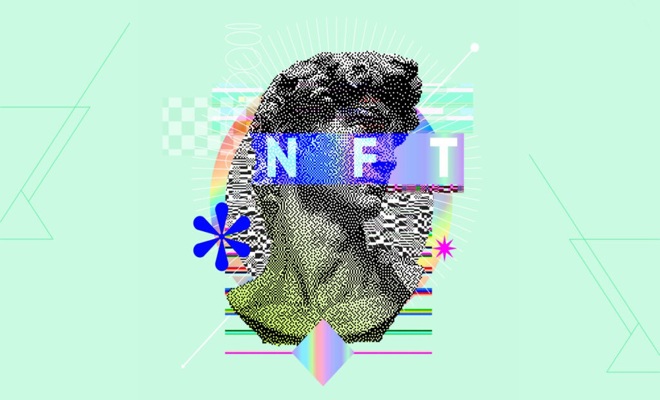
What is an NFT? Everything You Need to Know About Non-Fungible Tokens
NFTs, or Non-Fungible Tokens, have exploded in popularity in recent years, revolutionizing how we think about digital ownership and value. But what exactly are they, and why are they so significant? This comprehensive guide will delve into the world of NFTs, exploring their underlying technology, diverse applications, and potential impact on various industries.
Understanding the Basics of NFTs
At their core, NFTs are unique digital assets that represent ownership of a specific item or piece of content. Unlike fungible tokens like Bitcoin or Ethereum, which are interchangeable, each NFT is distinct and cannot be replicated. This uniqueness is what gives NFTs their value, as they can be used to represent anything from digital art and collectibles to virtual real estate and music.
NFTs are built on blockchain technology, the same technology that powers cryptocurrencies. This decentralized and secure ledger ensures that each NFT's ownership and transaction history are transparent and verifiable. When you purchase an NFT, you gain verifiable ownership of that specific digital asset, recorded on the blockchain.
The Technology Behind NFTs
NFTs rely on several key technologies to function:
• Blockchain: As mentioned earlier, blockchain provides the foundation for NFTs, ensuring their security and transparency.
• Smart Contracts: These self-executing contracts automate the transfer of ownership and can also be used to enforce royalties for creators.
• Metadata: This data provides detailed information about the NFT, such as its creator, description, and associated files.
• Wallets: Digital wallets are used to store and manage NFTs, allowing users to buy, sell, and trade them.
Applications of NFTs
The versatility of NFTs has led to their adoption in a wide range of industries:
• Art: Digital artists can sell their work as NFTs, retaining ownership and earning royalties on future sales.
• Collectibles: NFTs can represent unique digital collectibles, such as trading cards, virtual pets, or in-game items.
• Gaming: NFTs can be used to create unique in-game assets, allowing players to own and trade their virtual items.
• Music: Musicians can sell their songs or albums as NFTs, giving fans direct ownership and potentially offering exclusive content.
• Real Estate: NFTs can represent ownership of virtual land or even physical properties, streamlining the buying and selling process.
The Benefits of NFTs
NFTs offer several advantages for both creators and collectors:
• Proof of Ownership: NFTs provide irrefutable proof of ownership for digital assets, preventing counterfeiting and fraud.
• Direct Connection with Fans: Creators can connect directly with their fans, bypassing traditional intermediaries and fostering a stronger sense of community.
• New Revenue Streams: NFTs can create new revenue streams for creators, such as through royalties on secondary sales or by offering exclusive content.
• Increased Liquidity: NFTs can be easily traded on various marketplaces, increasing liquidity for digital assets.
The Challenges of NFTs
Despite their potential, NFTs also face certain challenges:
• Environmental Concerns: The energy consumption associated with some blockchain networks has raised environmental concerns.
• Market Volatility: The NFT market can be highly volatile, with prices fluctuating significantly.
• Intellectual Property Issues: Copyright infringement and plagiarism remain concerns in the NFT space.
• Accessibility: The technical knowledge required to create, buy, and sell NFTs can be a barrier for some users.
The Future of NFTs
NFTs are still a relatively new technology, but they have the potential to revolutionize various industries. As the technology matures and adoption increases, we can expect to see even more innovative applications of NFTs in the future.
At their core, NFTs are unique digital assets that represent ownership of a specific item or piece of content. Unlike fungible tokens like Bitcoin or Ethereum, which are interchangeable, each NFT is distinct and cannot be replicated. This uniqueness is what gives NFTs their value, as they can be used to represent anything from digital art and collectibles to virtual real estate and music.
NFTs are built on blockchain technology, the same technology that powers cryptocurrencies. This decentralized and secure ledger ensures that each NFT's ownership and transaction history are transparent and verifiable. When you purchase an NFT, you gain verifiable ownership of that specific digital asset, recorded on the blockchain.
The Technology Behind NFTs
NFTs rely on several key technologies to function:
• Blockchain: As mentioned earlier, blockchain provides the foundation for NFTs, ensuring their security and transparency.
• Smart Contracts: These self-executing contracts automate the transfer of ownership and can also be used to enforce royalties for creators.
• Metadata: This data provides detailed information about the NFT, such as its creator, description, and associated files.
• Wallets: Digital wallets are used to store and manage NFTs, allowing users to buy, sell, and trade them.
Applications of NFTs
The versatility of NFTs has led to their adoption in a wide range of industries:
• Art: Digital artists can sell their work as NFTs, retaining ownership and earning royalties on future sales.
• Collectibles: NFTs can represent unique digital collectibles, such as trading cards, virtual pets, or in-game items.
• Gaming: NFTs can be used to create unique in-game assets, allowing players to own and trade their virtual items.
• Music: Musicians can sell their songs or albums as NFTs, giving fans direct ownership and potentially offering exclusive content.
• Real Estate: NFTs can represent ownership of virtual land or even physical properties, streamlining the buying and selling process.
The Benefits of NFTs
NFTs offer several advantages for both creators and collectors:
• Proof of Ownership: NFTs provide irrefutable proof of ownership for digital assets, preventing counterfeiting and fraud.
• Direct Connection with Fans: Creators can connect directly with their fans, bypassing traditional intermediaries and fostering a stronger sense of community.
• New Revenue Streams: NFTs can create new revenue streams for creators, such as through royalties on secondary sales or by offering exclusive content.
• Increased Liquidity: NFTs can be easily traded on various marketplaces, increasing liquidity for digital assets.
The Challenges of NFTs
Despite their potential, NFTs also face certain challenges:
• Environmental Concerns: The energy consumption associated with some blockchain networks has raised environmental concerns.
• Market Volatility: The NFT market can be highly volatile, with prices fluctuating significantly.
• Intellectual Property Issues: Copyright infringement and plagiarism remain concerns in the NFT space.
• Accessibility: The technical knowledge required to create, buy, and sell NFTs can be a barrier for some users.
The Future of NFTs
NFTs are still a relatively new technology, but they have the potential to revolutionize various industries. As the technology matures and adoption increases, we can expect to see even more innovative applications of NFTs in the future.
Keywords
